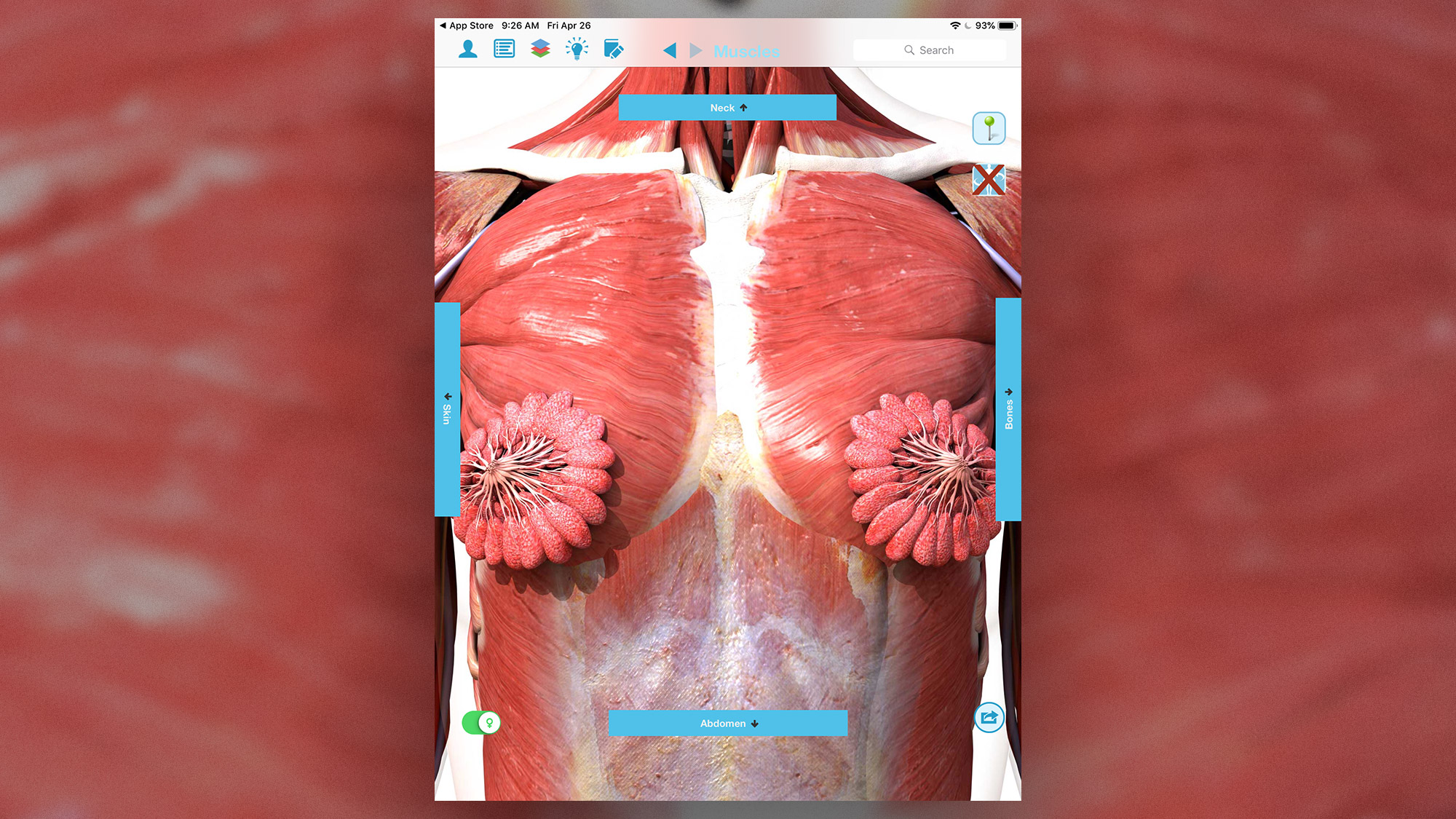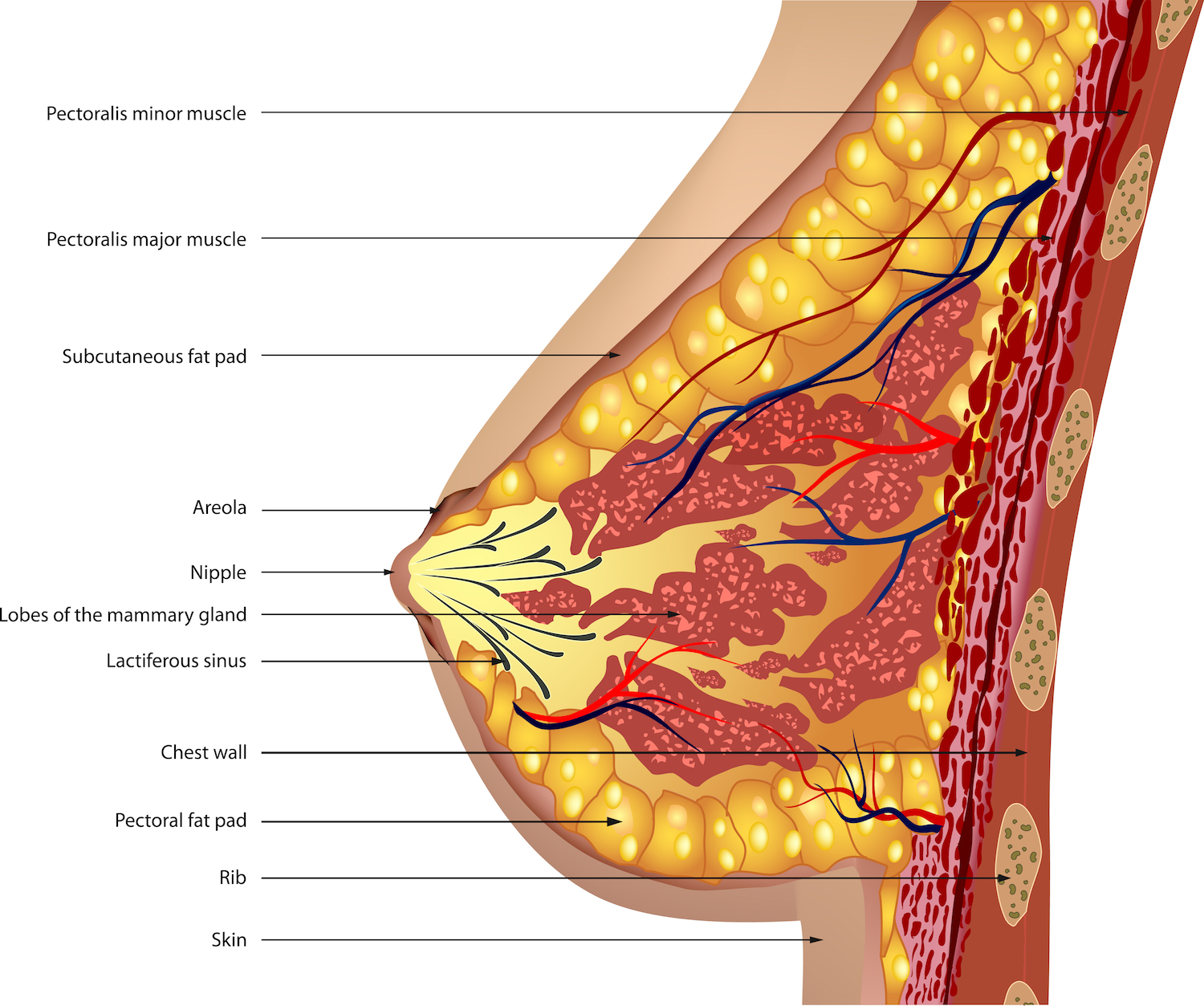That Viral Image of Flower-Shaped 'Breasts' Is Wildly Inaccurate — Here's Why

If you thought that viral image claiming to show a woman's flower-shaped milk ducts looked weird, you would be correct. That's because the image isn't an accurate portrayal of a woman's mammary glands.
In reality, women's milk ducts look nothing like that image. And the petal-like structures that look like a fancy, open umbrella aren't milk ducts (we'll explain what they really are in a moment).
More importantly, in real life, the "petals" wouldn't be arranged so in such a tidy circle.
The image itself went viral this week, when Twitter user @lemonadead posted it on April 21, writing "I just realized I never saw a photo of a female muscle system. This is NOT what I imagined milk ducts to look like."
Related: Why is this viral image of unrecognizable objects so creepy?
As of today (April 26), the tweet has garnered nearly 140,000 likes and an array of incredulous replies. One woman posted, "At first I thought someone put flowers over boobs because art. Now, it looks like a weird alien creature lives inside my body and I'm terrified." And another said "Maybe it's only freaking people out because it's not normalized because of the patriarchy showing us a man's biology in class."
However, the image isn't a photo as @lemonadead thought, but rather an illustration from an iPad app called Anatomy & Physiology. Moreover, the picture doesn't show the "female muscle system," as the tweet suggests.
Sign up for the Live Science daily newsletter now
Get the world’s most fascinating discoveries delivered straight to your inbox.
First off, a woman's breasts don't contain skeletal muscle, which is usually found attached to bones, according to ScienceAlert. The lobules and ducts in a woman's breasts are made of various types of epithelial cells, according to the 2018 book "Physiology, Lactation." However, there are circular muscles in the areola, the dark area that surrounds the nipple, which make the nipple stand firm when stimulated, such as when an infant is suckling milk, according to Encyclopedia Britannica. The breast also contains smooth muscles, which help milk flow when needed; these muscles don't appear to be shown in this particular illustration.
Instead, the illustration clearly highlights the petal-like structures. In the iPad app, these are referred to as "the mammary gland," which is a bit misleading because, as ScienceAlert notes, the mammary gland makes up the entire breast, and not just these red blobs.
So, what are the flower-like arrangements? They're mostly likely lobules. Each lobule is connected to small channels known as lactiferous ducts (or milk ducts) that, in turn, connect to the nipple, where the milk flows out of when a woman nurses a child.
Each lobule (that is, each "petal") is made up of alveoli — hollow cavities that are lined with milk-secreting cells. Alveoli produce milk when they receive a certain hormonal signal from the body, ScienceAlert reported.
But these lobules aren't exactly arranged in a beautiful flower pattern; here is another illustration that is more realistic.

What's more, these lobules change in number and size, both of which increase as a woman's pregnancy progresses, according to "Physiology, Lactation."
- Wonder Woman: 10 Interesting Facts About the Female Body
- 10 Things Every Woman Should Know About a Man's Brain
- 10 Things Every Man Should Know about a Woman's Brain
Originally published on Live Science.

Laura is the archaeology and Life's Little Mysteries editor at Live Science. She also reports on general science, including paleontology. Her work has appeared in The New York Times, Scholastic, Popular Science and Spectrum, a site on autism research. She has won multiple awards from the Society of Professional Journalists and the Washington Newspaper Publishers Association for her reporting at a weekly newspaper near Seattle. Laura holds a bachelor's degree in English literature and psychology from Washington University in St. Louis and a master's degree in science writing from NYU.









